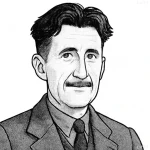“A revolution is an idea which has found its bayonets.”

- August 15, 1769 – May 5, 1821
- French of Italian descent
- French military officer and emperor
table of contents
Quote
“A revolution is an idea which has found its bayonets.”
Explanation
In this statement, Napoleon Bonaparte captures the transformation of an abstract idea into a concrete force. He suggests that a revolution occurs when a powerful idea gains active support and momentum, embodied by “bayonets” or armed forces ready to fight for it. An idea, on its own, can inspire and mobilize people intellectually, but it only becomes a true revolution when it finds the resources, organization, and physical force to challenge existing systems. Napoleon’s metaphor reflects the moment when ideals, fueled by determination and action, turn into a movement strong enough to enact real change.
This concept highlights the dual nature of revolutions as both philosophical and physical phenomena. Many revolutionary movements start with ideas about freedom, justice, or equality, which resonate with people on an intellectual and emotional level. However, these ideas must be supported by active participants, resources, and often organized force to achieve the intended social or political transformation. Examples in history, such as the American, French, or Russian revolutions, illustrate this shift from ideas to action, as people mobilized not only in thought but also through armed struggle or unified resistance.
Napoleon’s statement reminds us of the importance of commitment and mobilization in bringing about meaningful change. While ideas alone can inspire, they require active participation, resources, and sometimes force to realize their potential impact. This perspective encourages us to see revolutions as more than ideals, recognizing them as complex processes that blend ideology and action to reshape societies. It highlights the need for unity and determination among supporters, showing that transformative change often requires both vision and the willingness to act upon it.
Would you like to share your impressions or related stories about this quote in the comments section?



